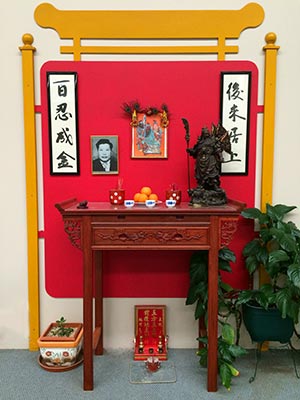 Tai Chi philosophy is an extension of the traditional Chinese philosophy and way of life where Taoism and Confucianism were seen as two distinct responses to the social, political and philosophical conditions of Ancient China. Confucianism is concerned with social issues, conduct and human society. Taoism has a much more individualistic and mystical character, greatly influenced by nature.
Tai Chi philosophy is an extension of the traditional Chinese philosophy and way of life where Taoism and Confucianism were seen as two distinct responses to the social, political and philosophical conditions of Ancient China. Confucianism is concerned with social issues, conduct and human society. Taoism has a much more individualistic and mystical character, greatly influenced by nature.
Confucius laid down a pattern of thinking that was followed by millions of people in more generations than any other human race on the face of the earth. His intense personal goal was to restore peace and order to the provinces. His message was if we are to achieve a state of orderliness and peace, we need to return to traditional values of virtue. More than anything, according to Confucius, the ancients understood the order and hierarchy of heaven and earth.
Taoism is based on the idea that behind all material things and all the change in the world lies one fundamental, universal principle: the Way or Tao.
Thus the Tao Te Ching could be translated as The Law of Virtue and it’s Way.
The tai chi Treatise became known as the way the philosophy of Tao is put in action.
Lao Tzu taught that one should endeavour to do engage in Wu-Wei and to discern and follow the natural forces by following the flow of events and not to pit oneself against the natural order of things. By acting naturally and letting things be, one becomes in harmony with their own essence, the Tao. The core of the idea is that the Tao gave birth to the One.
A good example of that tai chi philosophy in action is told in the story of The Emperor, the Bird and the tai chi Master.
When the One, created the Two, the forces of Yin and Yang were exposed. These opposite forces of nature are locked in an eternal struggle that neither can win. At the very point that one reaches its highest power it gives way to the other. For man to live in harmony with the Tao, he must live in accordance with the forces of Yin and Yang, while maintaining a non-interference approach to life.
Yang is represented by maleness, the sun, heat, light, Heaven, day and so on. Yin is the principles of femaleness, the moon, cold, darkness, night and so on. As all phenomena have within them the seeds of their opposite state, this is called “presence in absence”.
The development of Tai Chi offered an outlet for both Taoism and Confucianism. Personal defence was very important to China, so was satisfying Confucian imperative to act in a way that was internally Tao.
The elements of physical action and self-improvement could strengthen both the state and the individual. Many teachers were showing their students how to resolve many tensions, including that of outward action and inward reflexion, which are central to Yin and Yang of daily life.
- Everything is part of the whole
- Everything contains Yin, Yang and Chi
- The only constant is Change
- Let things occur naturally rather than with force (Wu-wei)
- Yin and Yang are in constant change
- Gentleness develops strength
 The Altar at Golden Lion
The Altar at Golden Lion
The tai chi altar is built to remind us of some special values, to honour traditional deities and pay respect to the spirits of our ancestors. More about our Altar can be read here.
More can be read about how tai chi philosophy is applied to life today. Please see our Articles section.
